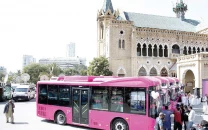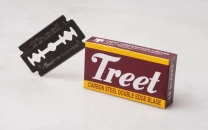Heritage and legacy
It is not only physical heritage, but also our cultural, intellectual heritage that needs to be protected for future

The writer is a Howard Hughes
Medical Institute professor of Biomedical Engineering, International Health and Medicine at Boston University. He
tweets @mhzaman
Soon after the Lebanese civil war broke out, Beirut museum’s central location became its biggest curse. It was literally on the deathly green line that separated East and West Beirut. Maurice and Olga knew that in a war, where human life was worthless, and a never-ending appetite for killing reigned supreme, artefacts of a time gone mattered little. Yet, they also knew that the madness of war would eventually end, and if the priceless heritage that connected the Lebanese people and their land to the Romans, Greeks, Egyptians and Phoenicians was lost, it would bring an end to any hopes for a united future.
To save the future, Maurice, as director general of antiquities, devised an elaborate but risky plan to save all that they could, even if it meant risking his life during heavy firefighting and shelling. Olga and many other dedicated members of the museum worked hand in hand with him. He started moving precious artefacts from showcases, one by one, and shifting them in concrete boxes that were camouflaged. The location of each item was kept a secret and only shared with a group of very trusted people. When the fighting intensified and rockets started hitting the museum directly, new plans had to be made for storing larger items, including ancient sarcophagi, floor mosaics and statues that could not be moved. Maurice worked tirelessly with workers to create a unique solution for each artefact. The sarcophagi were encased in thick wooden boxes, which were then encased in a plywood box and the space between the two was filled with cement. Once that cement dried up, this box within a box was covered in reinforced cement with such mastery that it looked like a large cement block. The statues were buried in a similar manner and their cement boxes meshed perfectly with the interior walls. Innovative ideas using plastic sheets, plywood and cement were used to cover the precious floor mosaics. Maurice, despite his advanced age, led his team and worked tirelessly, even when the museum was under heavy gunfire.
Unlike the museum in Baghdad, which was looted and badly destroyed, the Beirut museum — despite the 16-year war — survived with most of its precious artefacts intact. Maurice never got to see the museum reopening or to supervise the re-excavation of the collective heritage of all civilisation, which he had meticulously saved. He died on December 24, 1994 approximately five years before the spectacular rebirth of the museum in 1999. Yet he, and his legacy, live on.
Standing inside the grand hall of the museum today, I felt indebted to Maurice. It was largely because of him that I felt both more connected and more humble about my own origins. I was struck by the realisation of how much we owe it to those who came thousands of years before us. I could not help but wonder who will be the guardian of our own heritage and save it for the world? What will we have to show to those who will come and visit us 20, 50 or 100 years from now? We may not be fighting a civil war like the one in Beirut, but we are under constant assault from forces of extremism, intolerance, division and ignorance. The guns may not be thundering every day, but when they do thunder, the loss is not insignificant. It is not only the physical heritage, but also our cultural and intellectual heritage that needs to be protected for the future.
People like Maurice Chehab preserve what is most beautiful in this world: our heritage and history, but they also come from a long line of people who are proud of their past and worried about their future. They think, they care and they deliver. The question is not who will be our Maurice; the question is do we have what it takes to produce one?
Published in The Express Tribune, February 24th, 2015.
Like Opinion & Editorial on Facebook, follow @ETOpEd on Twitter to receive all updates on all our daily pieces.













COMMENTS
Comments are moderated and generally will be posted if they are on-topic and not abusive.
For more information, please see our Comments FAQ